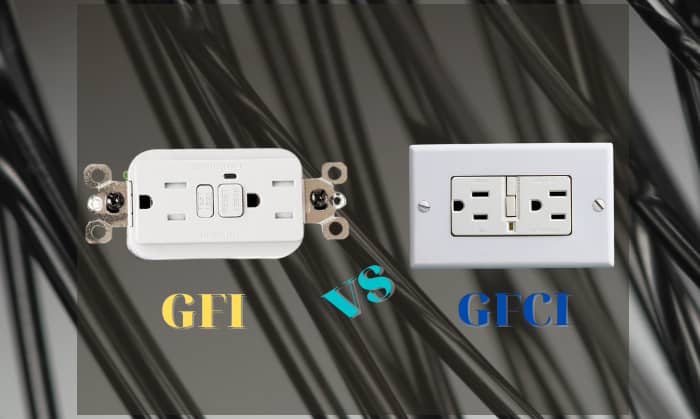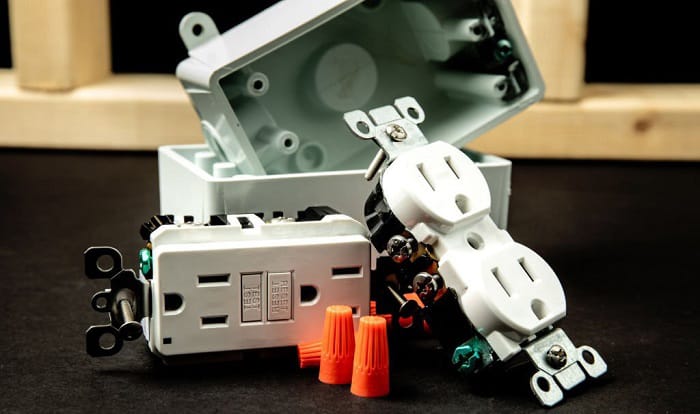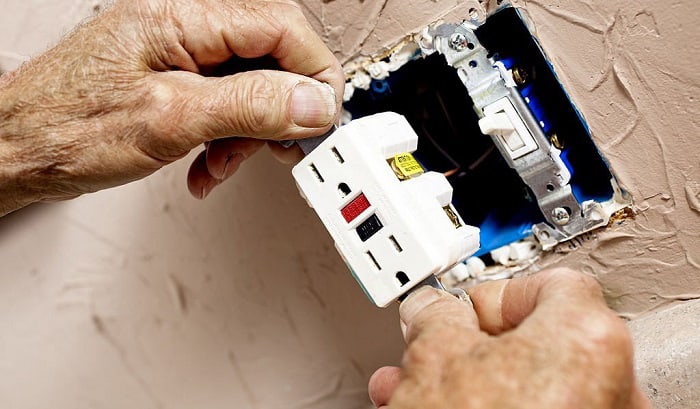You’re trying to create the correct electrical setup for your devices. Now, the diagram presents you with two assembly options for some of your electronics: GFCI and GFI. But what are the differences between GFCI vs GFI?
You can use GFCI or GFI interchangeably. These electrical assemblies help monitor and manage the flow of electricity to connected devices.
But some differences can exist between GFCI and GFI. Continue reading to know these dissimilarities, along with other relevant information regarding these gadgets.
Table of Contents
What Does GFCI Stand for?
GFCI stands for ground-fault circuit interrupter. Often denoting a quick-acting circuit breaker, this often trips faster than a regular breaker to prevent serious damage by reading the incoming and outgoing current.
What Does GFI Stand for?
GFI means ground fault interrupter. It typically functions the same or is highly similar to GFCI outlets and breakers. Use these modules to protect electronics near moisture-rich areas, such as bathrooms, kitchens, and swimming pools.
Are GFI And GFCI the Same Thing?
There’s no significant difference between GFI and GFCI. Many electricians may interchange the two terms on different occasions. Still, some might prefer using GFCI rather than GFI.
In truth, GFCI might be more ideal to use when highlighting a ground fault interrupter circuit breaker.
If there’s a difference between these two terms, it would be the way they handle electricity. GFI might prevent electrocution.
On the other hand, GFCI prevents electric shocks, which are still serious but not fatal like electrocution. Both can help protect connected electronics from serious and/or irreparable harm.
Also, using GFI in a statement may mean different things. For example, you can use it to denote GFI plugs or circuit breakers.
You can find additional information about the difference (or lack thereof) between these two electrical terms by watching the right online video.
What Are the 3 Types of GFCI?
Take note that all GFCIs have relatively the same function. However, each model often performs differently based on the required application and the unit’s existing limitations.
The three general types of GFCI are:
1. GFCI Outlet
Again, there’s no significant difference between using a GFI vs GFCI outlet. Both are still going to work as standard electrical outlets.
If installed properly, a GFCI or GFI electrical outlet can also protect another outlet on the same circuit. However, installers need to pay attention to certain requirements to reduce the risks of possible mishaps while using electronics connected to these outlets.
2. Portable GFCI
As its name implies, the portable GFI electrical outlet is generally ideal for convenient transport. Certain models also allow installation on non-GFCI outlets.
3. GFCI Circuit Breaker
Don’t confuse a GFCI receptacle with a GFCI circuit breaker. The former is an assembly integrated into an existing outlet. On the other hand, the breaker model helps protect an entire circuitry from issues like overloads and ground faults.
Like the GFCI outlet, it can be possible to replace a non-GFCI breaker with a GFI model. But you might need to follow unique steps to complete a proper setup.
Where to Install GFCI Circuit Breaker?
You can install GFCI circuit breakers in different service panels, provided that those breaker boxes can cater them. Moreover, it can be a good idea to install these circuit breakers near relatively damp areas.
Aside from bathrooms and kitchens, you may install GFCI breakers near crawl spaces and outdoor locations within your property. Another example is to place these breakers in garages, particularly if you live in a city or town with a fairly wet climate.
Frequently Asked Questions
Is It Safe To Replace A GFCI Outlet With A Regular Outlet?
You may lose some features distinct to GFCI outlets, such as moisture protection, but if the location of the replaced outlet isn’t near water, it’s probably not an issue.
It also means that you don’t have to care for the regular outlet as much as a GFCI variant. Regular outlets might also have lower prices than their GFCI counterparts, which can be good for budget-conscious individuals.
Can You Put A GFI Outlet On A GFCI Breaker?
It isn’t usually a problem to use a GFCI outlet on GFCI breaker. As a bonus, if you put a GFCI circuit breaker into a GFI box, the entire connection receives the protection supplied by the switch.
What Kind Of GFCI Do I Need For Bathroom?
It depends on the appliance or fixture you’re installing in the space. For example, dedicated plug-in appliances often need 20-amp GFCI circuit breakers. But a 15-amp model may suffice for standard bathroom light fixtures.
Conclusion
At this point, you should have at least a general idea of the differences and similarities of GFCI vs GFI. Keep in mind that both terms are interchangeable. But some differences may exist among various GFCI and GFI models.
Also, you can use GFCI and GFI for things like outlets and circuit breakers. However, you should know which type of breaker or receptacle to use in certain electrical scenarios to avoid issues like overloads or short circuits.

I am Andrew Wright. With 8 years of experience designing, installing, and maintaining electrical power systems. I love my job, and I have always wanted to offer others the necessary help so they can take care of their houses.





